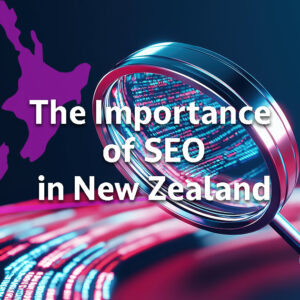The Path to Conversion – Is Your Website Doing as Much as it Could?

Filters
Results
If you’ve built a website but haven’t noticed an increase in leads or sales, it might not all be in your head. It’s true that a good website can bring home the bacon, but what if you have a well-designed site that people are finding but you aren’t seeing the results? What gives?
A common mistake people make is to get a website built and leave it at that. Then they go out and share it with the world. But what are people supposed to do once they get there? How can you turn anonymous visitors into qualified leads? Sure, some people might read your content decide to call you and that can be hard to quantify and attribute to your website. But your website can do much more.
Designing a conversion path can help you turn strangers into leads. It can help guide people into doing a positive action on your page and make it so the website you already put time, effort, and resources towards can pay you back.
What’s the goal of your website?
Depending on what type of business you have, your website might serve a different purpose. If you have an online store, for instance, you likely want people to buy your products directly. If not, you might want to use it as a first step for people calling your or coming to visit you in person. Your Call to Actions on your site should reflect your goal.
What is a Call to Action and why do I need them?
Before we jump into conversion paths, we need to talk about what a Call to Action (CTA) is. A CTA is a statement with the goal of getting someone to do something. It’s the type of thing you see at the end of web pages and ads, “Call now”, “Stop by today”, “Get yours here”, those types of phrases. The goal of a Call to Action is to tell the person what you want them to do next. Usually, they’re near the end of a piece of content because if someone read to the end to see it, they’re already interested in what you have to say. A CTA is the opportunity to suggest the next step in doing business with you while the information is still fresh.
Some business owners don’t use any kind of CTA because they believe that the visitor will already know what to do next, or that CTAs will be annoying. While this might be true for a segment of the population, they are used frequently enough that someone who was interested is unlikely to get soured and leave just because you ask them to call you for a free estimate. It might not be obvious to everyone what you expect them to do, and having a little reminder could make all the difference.
Your Call to Action doesn’t need to be obvious and straightforward either. Feel free to get creative if that matches your brand’s tone and style. Like “Pounce on our deal now before it goes in the litter box” for a cat toy company is purrfectly fine. A good CTA can help someone along the path to conversion.
What is a conversion path?
Simply put, a conversion path is a series of steps a visitor takes to make a desired action. That action could be signing up for your newsletter, making a purchase, giving you their contact information, or any number of things. If you have a CTA, a conversion is when somebody does the action the Call to Action suggests.
For many people, a conversion is a journey. People tend to do research and follow the steps on the Buyer’s Journey before making a purchase. And for the most part, the higher the price tag, the longer it takes to make a decision. A good conversion path takes this into account and provides visitors with information, helps explain why you’re the right choice, then finishes with an effective Call to Action.
How can I make effective conversion paths?
When done right, a conversion path can be very smooth. Instead of a serious of separate steps, it can be more likely an escalator, naturally guiding people to the top with minimal effort. If one company is unclear on what they want to do and hard to figure out, the potential customer might look to a competitor. After all, who wants to spend all that extra effort when there’s an easier option nearby?
Probably the most effective way to make conversion paths to work is to offer something of value to your visitors. This can be additional content like an eBook, a way to subscribe to your newsletter, or a coupon for a discount. What works best for you depends on what kind of products or services you offer and your target market.
If you have competitors who are active online, you can see what they’re up to as well. If they have a Facebook, which type of their posts are getting more results? You can emulate the successful posts not only online, but through your website too.
Becoming a convert
A standard place to add a CTA and the end of your conversion path for your pages is to add a contact form at the side or bottom of the page, like we have here. But it isn’t your only option. Some other varieties include:
- Linking to a resources page with other related content
- Having a quick animated pop-up message appear on intent to exit with an offer
- Ending with a call-to-action that calls the business number directly if the user is on a mobile device
- You can also add a welcome gate–a full-screen welcome pop-up–but we recommend having it based on cookies so it only happens on the first visit
There are plenty of options, but always make sure to take your target market’s preferences and your various buyer personas in mind. And once you do manage to get some new customers, it’s only the first step. By focusing on a positive customer experience on every step of the conversion path, you can earn regular customers or customers that might promote your business themselves. To learn more about effective websites and trends for 2020, you can download our eBook here. You can also call or come in and talk with us here at Back9 and we’ll be happy to show what we can do to make your marketing efforts more effective.





